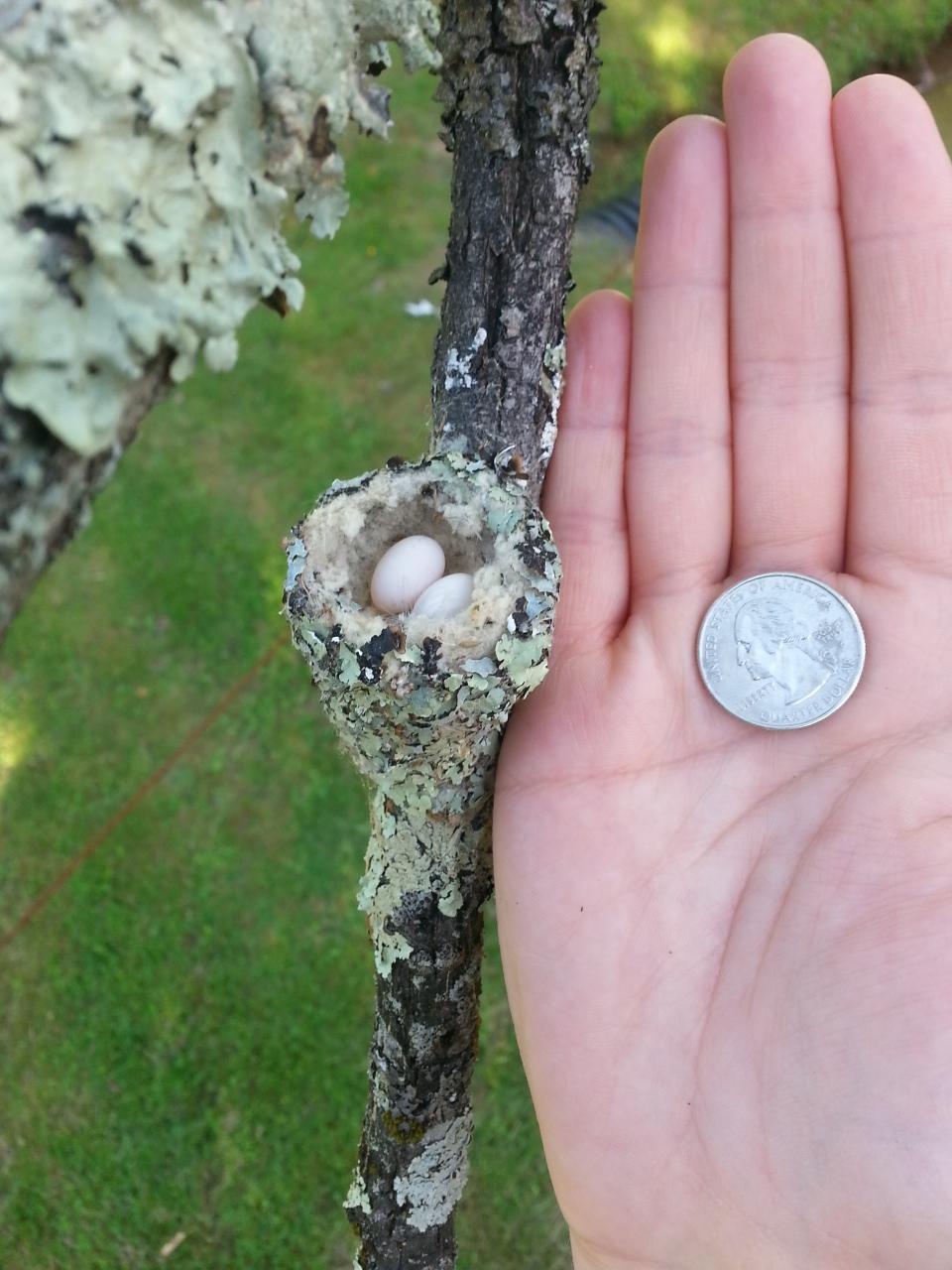Hummingbird nest size is a fascinating topic for bird enthusiasts and nature lovers alike. These tiny birds, known for their incredible flying abilities and vibrant colors, have unique nesting habits that vary by species. In this article, we will explore the different aspects of hummingbird nests, including their size, construction materials, and the factors that influence their nesting behavior.
Nesting is a critical part of a hummingbird's life cycle, as it directly impacts their reproductive success and the survival of their young. Understanding the size of their nests can provide valuable insights into their breeding habits and environmental preferences. This comprehensive guide will delve into the specifics of hummingbird nest sizes, offering information that is both informative and engaging.
From the materials they use to the locations they choose, every detail about hummingbird nests is intriguing. We will also discuss how external factors such as climate and habitat affect nest size and construction. Whether you are a seasoned birdwatcher or simply curious about these remarkable creatures, this article will equip you with essential knowledge about hummingbird nest size and its significance.
Table of Contents
What is Hummingbird Nest Size?
Hummingbird nests are typically small structures, reflecting the diminutive size of these birds. On average, a hummingbird nest measures about 2 to 3 inches in diameter and is 1 to 2 inches deep. However, the exact dimensions can vary based on the species and environmental conditions.
For example, the nest of the Ruby-throated Hummingbird, one of the most common species in North America, averages about 2 inches in diameter. In contrast, the Anna's Hummingbird, found primarily on the West Coast, may construct a slightly larger nest, reaching up to 3 inches in diameter.
These nests are intricately designed to provide a safe environment for the eggs and chicks. The size of the nest is crucial, as it must be large enough to accommodate the young while still being compact enough to remain hidden from predators.
Factors Affecting Nest Size
Several factors influence the size of a hummingbird's nest, including:
- Species: Different species of hummingbirds have distinct nesting preferences and sizes.
- Environmental Conditions: Availability of materials and climate can affect nest construction.
- Predation Risks: Birds may build smaller, more concealed nests in areas with high predator activity.
Understanding these factors can help birdwatchers anticipate the nesting habits of various hummingbird species in their area.
Materials Used in Nest Building
Hummingbirds are resourceful builders, often using a variety of materials to construct their nests. Common materials include:
- Plant Fibers: Soft plant fibers provide insulation and cushioning.
- Lichen: Lichen helps camouflage the nest, making it less visible to predators.
- Spider Silk: Spider silk is often used to bind the nest materials together, providing flexibility.
The combination of these materials creates a sturdy yet lightweight nest that can withstand the elements while protecting the delicate eggs and chicks inside.
Typical Nest Dimensions
As previously mentioned, hummingbird nests generally range from 2 to 3 inches in diameter. However, specific dimensions may vary:
- Ruby-throated Hummingbird: 1.5 - 2 inches deep, 2 inches wide.
- Anna's Hummingbird: 2 - 3 inches deep, up to 3 inches wide.
- Black-chinned Hummingbird: 1.5 - 2.5 inches deep, 1.5 - 2 inches wide.
These measurements highlight the diversity in nest size among different hummingbird species, which can be influenced by their specific habitats and reproductive strategies.
Nesting Habits of Different Species
Each hummingbird species exhibits unique nesting habits. For instance:
- Ruby-throated Hummingbirds: Prefer to build nests in trees or shrubs, often 10-30 feet above the ground.
- Anna's Hummingbirds: Frequently nest in urban areas, taking advantage of ornamental plants.
- Broad-tailed Hummingbirds: Typically build nests in coniferous forests, often using pine needles as nesting material.
These preferences not only influence nest size but also the overall success of their breeding efforts.
Importance of Nest Size for Young
The size of a hummingbird nest plays a crucial role in the survival of the young. Adequate space is necessary for the chicks to develop properly and for the mother to care for them effectively. A well-constructed nest provides:
- Protection: Keeps the chicks safe from predators and harsh weather.
- Insulation: Maintains a stable temperature for the developing eggs and chicks.
- Accessibility: Allows the mother to easily feed and tend to her young.
These factors contribute significantly to the overall success of a hummingbird's reproductive efforts, affecting population dynamics and species survival.
How to Attract Hummingbirds to Your Garden
If you're interested in attracting hummingbirds to your garden, consider the following tips:
- Plant Native Flowers: Choose plants that provide nectar, such as trumpet vine and bee balm.
- Provide Water Sources: Install bird baths or shallow dishes to offer drinking and bathing opportunities.
- Use Hummingbird Feeders: Fill feeders with a sugar-water solution to supplement their diet.
Creating a welcoming environment can encourage these beautiful birds to visit and potentially nest in your area.
Conclusion
In summary, understanding hummingbird nest size is essential for appreciating the complexities of these remarkable creatures. Their nests, though small, serve vital purposes in protecting their young and ensuring their survival. By recognizing the factors that influence nest size and the materials used in construction, we can gain deeper insights into their nesting habits and behaviors.
We invite you to share your thoughts in the comments below, and if you found this article informative, consider sharing it with fellow bird lovers or exploring more articles on our site about hummingbirds and their fascinating lives.
Thank you for reading, and we hope to see you back soon for more exciting information about our feathered friends!
Article Recommendations
:max_bytes(150000):strip_icc()/__opt__aboutcom__coeus__resources__content_migration__treehugger__images__2018__02__hummingbird-eggs-981ba1668d334da18198a59c16369a2d.jpg)


ncG1vNJzZmilqZu8rbXAZ5qopV%2BcrrOwxKdvaKClorqqusaboKucXaOytMCMrKCznV6dwa64